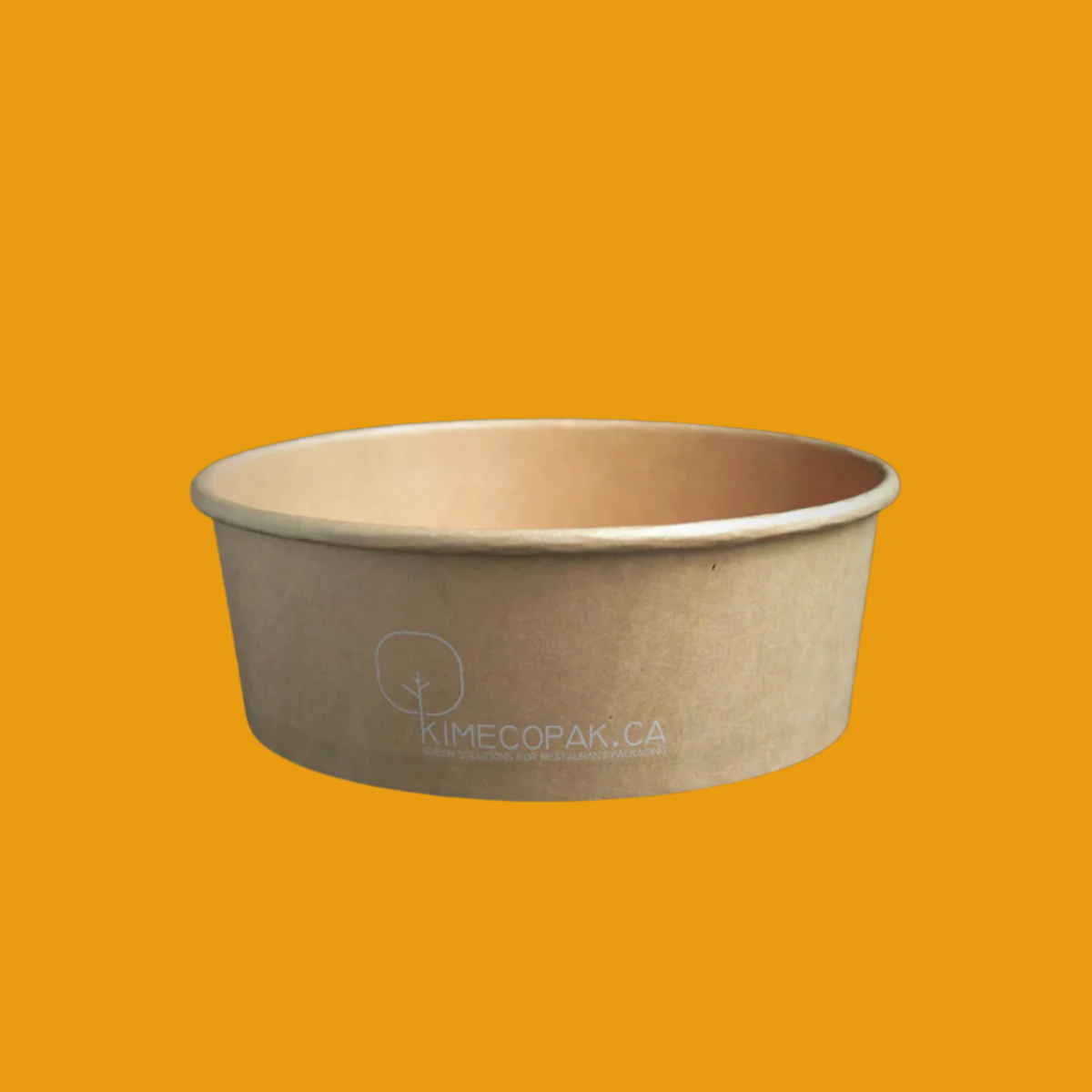Are you dreaming of opening your own ramen shop? From the rich, flavorful broth to the springy noodles and irresistible toppings, ramen is more than just a dish — it’s a cultural experience that’s capturing hearts everywhere. But where do you begin? This guide will walk you through how to start a ramen noodle business — from shaping your concept and writing a business plan to financial prep and attracting customers from day one. Whether you’re a passionate chef or an entrepreneur seeking a hot new venture, this roadmap is made for you.
-
Customer Education in Ramen Cuisine: Reveal Simple and Effective Ways for Your Ramen Restaurants
- Narrow Your Noodle Niche: 3 Steps to Standing Out in a Competitive Market
- From Broth to Bytes: How Tech Solves Traditional Ramen Problems?
The Dream Bowl: Is a Ramen Business Your Calling?

Why Ramen? Passion, Profit Potential, and Market Demand
Ramen isn’t just a dish; it's a cultural experience that captivates taste buds and warms hearts. With its growing popularity, especially among younger consumers looking for comfort food, starting a ramen business is increasingly seen as a smart entrepreneurial move. The cravings for flavorful broths, tender noodles, and hearty toppings are on the rise, making this a lucrative market to tap into.
The Reality Check: Intense Competition, High Costs, Complex Operations
However, diving into the ramen world isn't all broth and noodles. The competition can be fierce as more restaurants pop up, creating a crowded market. Plus, there's the challenge of high startup costs, particularly if you're focusing on authentic, high-quality ingredients. And let’s not forget the complexity of making broth – a well-crafted ramen takes time to perfect!
Skills You'll Need: Culinary Expertise (Ramen Focus!), Business Management, Resilience
Owning a ramen shop requires more than just a love for the dish. You’ll need culinary skills specific to ramen, a keen sense for business management, and a whole lot of resilience. You'll likely face long hours and some hurdles along the way, but with passion and determination, you can overcome them.
How To Open A Ramen Shop: Planning Your Ramen Haven

Defining Your Vision: Traditional vs. Modern, Niche Styles
Before you take the plunge, it’s vital to define your vision. Will your shop serve traditional styles like Tonkotsu and Miso, or will you lean towards modern, innovative ramen creations? Focusing on one specific style can help you stand out and create a loyal customer base.
Essential: Writing Your Ramen Restaurant Business Plan
Don’t skip writing a business plan! A solid ramen restaurant business plan PDF will detail your concept, target market, and financial forecasts, making it an invaluable blueprint for your startup.
Know Your Customer & Competitors: Market Research
Understanding who your customers are and what your competitors are offering is essential. Conduct market research to help tailor your menu to local tastes and needs. Consider surveys or taste-testing sessions to gather valuable feedback.
Initial Menu Ideas & Signature Dish Concepts
Think about starting with a few signature dishes. Perhaps a spicy ramen that packs a punch, or a rich, creamy broth that has guests coming back for more. Keeping your initial menu simple, yet unique, will help you establish a name before expanding options.
Show Me the Money: Funding & Financials

How Much Does It Cost to Start a Ramen Noodle Business?
Establishing a ramen shop requires significant financial planning. You’ll need to estimate rents, build-out costs, kitchen equipment, initial inventory, and necessary licenses. A ramen shop startup cost estimate can help you understand the financial landscape you're stepping into.
Funding Sources: Personal Capital, SBA Loans, Investors, Crowdfunding
Consider various ramen shop financing options. You might tap into personal savings, look for Small Business Administration (SBA) loans, bring on investors, or even employ crowdfunding. Each avenue has its pros and cons, so choose what aligns best with your goals.
Creating Realistic Financial Projections & Budgets
Once you've secured funding, focus on creating realistic financial projections and budgets. This will help you keep track of your spending and ensure you're setting yourself up for long-term success.
Location & Law: Finding a Space and Getting Legal
Choosing the Perfect Location: Factors to Consider
The right location can make or break your ramen shop. Look for areas with high foot traffic, visibility, and a demographic that aligns with your target customer. Think about what will attract ramen lovers to your door!
Understanding and Negotiating Your Commercial Lease
Once you find your ideal location, understanding and negotiating your commercial lease is crucial. Don’t rush this step; ensure you’re comfortable with the terms before signing anything.
The Permit Maze: Health, Business, Liquor Licenses, Zoning
Navigating permits can be overwhelming! You’ll need various licenses, from health and business to food permits. Make sure to check the food business license requirements for your area, gathering those necessary documents so your doors can open without a hitch.
Registering Your Business Name and Structure
Finally, make your business official! Choose a name, and decide on the best structure, be it LLC, S-Corp, etc. Make sure to register with the relevant authorities to protect your brand.
The Heart of the House: Designing Your Kitchen & Dining Area

Essential Ramen Kitchen Equipment: Beyond the Basics
When it comes to setting up your kitchen, focusing on essential ramen equipment is pivotal. You'll need stock pots, noodle cookers, and other specialized tools to create delicious bowls of noodles that keep customers coming back.
Full Commercial Kitchen Setup Checklist
Don't forget to compile a comprehensive kitchen setup checklist! Think refrigeration, prep areas, hood vents, and dishwashing stations. Every detail matters to create a fully functional kitchen.
Efficient Kitchen Layout for Ramen Workflow
An efficient kitchen layout can save you time and energy. Ensure there's a logical flow from food prep to cooking to service, minimizing chaos during busy hours.
Designing the Dining Space: Ambiance, Seating, Flow
Create a dining area that enhances the ramen experience. Consider the ambiance, seating arrangements, and overall flow of the space to invite guests to come in, relax, and enjoy their meals.
Crafting Perfection: Menu, Sourcing, and The Soul of Ramen
Creating your ramen business starts with understanding the essence of ramen itself. It’s not just about the noodles; it’s about crafting flavors that warm the soul.
Developing Your Master Recipes: Broth, Tare, Noodles, Toppings
Your ramen’s backbone is its broth. Dive deep into the creation of a rich, savory stock that speaks volumes of your culinary mastery. A good broth can take days to create, simmering bones and vegetables into a harmonious blend.
- Broth: Focus on a variety like Tonkotsu (pork bone), Shoyu (soy sauce), or Miso. Each has its own personality and can define the character of your shop.
- Tare: This seasoning base enhances the broth. Experiment with miso, soy sauce, and even shio (salt) to create a unique flavor profile.
- Noodles: Choosing the right type of noodle is vital. Fresh, homemade options can set you apart, while excellent suppliers like Sun Noodles can provide consistency.
- Toppings: Classic toppings include Chashu (braised pork belly), Ajitama (soft-boiled egg), scallions, and nori (seaweed). Each adds texture and flavor, so getting these right is a fine balance.
Sourcing Quality Ingredients: Finding Reliable Suppliers
Building relationships with suppliers is crucial. Search for local farms or wholesalers dedicated to quality. Establish trust and ensure they can meet your demands consistently.
- Sun Noodles is a popular choice for many ramen bars due to their quality and reliability.
- Don’t hesitate to sample ingredients before committing; your ramen will reflect the quality of what you use.
The Noodle Decision: Fresh In-House vs. Sourced?
Consider making noodles in-house for a truly authentic touch. Although more labor-intensive, fresh noodles can elevate your dish dramatically.
-
Making your noodles allows for control over thickness, texture, and flavor, while pre-sourced options can provide convenience and consistency, especially for new entrepreneurs.
Menu Engineering: Balancing Variety, Food Cost, and Appeal
Striking the right balance in your menu is essential for both customer satisfaction and profitability.
- Aim for a combination of signature dishes and rotating specials to keep it fresh.
- Keep a close eye on food cost control; use seasonal ingredients to manage expenses while still offering variety.
Beverage Program and Side Dishes
Complement your ramen offerings with drinks and side dishes that resonate with the dining experience.
-
Popular sides like Gyoza (dumplings) and Edamame not only enhance the meal but can also improve your margins.
-
Consider a range of beverages from sake to unique craft sodas that reflect your brand.
Building Your Crew: Hiring and Training Staff
A smart and passionate team is the heartbeat of your ramen shop.
Identifying Key Roles: Head Chef/Kitchen Manager, Line Cooks, Servers, Dishwashers
You’ll need experienced chefs who understand ramen culture:
- Find experienced ramen chef: Ensure your head chef has a solid background in ramen, as they will set the culinary tone.
- Create job descriptions for line cooks and front-of-house staff that highlight the importance of teamwork and culinary passion.
Effective Recruiting, Interviewing, and Hiring Practices
Recruiting the right team can feel daunting.
- Look for candidates who share your passion for ramen, not just culinary skills.
- Conduct hands-on trials as part of the interview process to see how they interact in a kitchen setting.
Comprehensive Training: Recipes, Service Standards, Food Safety, Culture
Establish rigorous training for staff.
- Ensure they understand the specifics of ramen culture, from the importance of broth to the perfect presentation of each dish.
- Implement training sessions that cover food safety standards in addition to cooking techniques.
Spreading the Aroma: Marketing and Grand Opening

Marketing will set the stage for your ramen business, sharing your vision with the community.
Creating Your Restaurant's Brand Identity and Story
Your restaurant should have a story that draws people in.
-
Think about what makes your ramen unique. Whether it’s a family recipe or an innovative twist, showcase this in all marketing materials.
Building an Online Presence: Website, Social Media (Instagram!), Online Ordering, Reviews
In today’s digital age, your online presence is key.
-
A well-designed website can convey your menu and story, while platforms like Instagram can showcase your dishes visually. Don’t underestimate the power of community reviews; they can significantly impact your restaurant’s success.
Local Marketing Tactics: Community Engagement, Partnerships, PR
Get involved in your community.
-
Host ramen tasting events or collaborate with local businesses. This builds relationships and brings people through your door.
Planning and Executing a Successful Grand Opening
A grand opening can make or break your business.
- Plan ahead with promotions, invite local influencers, and ensure every detail aligns with your brand story. A little buzz can lead to long-lasting clientele.
Ramen Restaurant Startup FAQs
How much does it cost to open a decent ramen shop?
Costs can vary widely based on location and size, but expect initial expenses to range from $100,000 to $300,000. Factor in rent, equipment, supplies, and marketing.
Do I absolutely need prior chef experience to open a ramen business?
While formal chef experience is beneficial, passion and a willingness to learn can take you far. Consider hiring a skilled head chef or taking culinary courses to enhance your skills.
What single factor is most crucial for a ramen shop's long-term success?
The quality and consistency of your broth are paramount! Customers will return not just for good ramen but for exceptional broth times and again.
Where can I learn authentic ramen making techniques or find reliable recipes?
Look into culinary schools offering specialized programs like the Yamato Noodle School or consider hiring consultants with ramen experience. These resources can guide you on your journey to mastering this delicious craft.
Conclusion
Starting a ramen noodle business is a journey fueled by passion and dedication. Each bowl you serve is a testament to your hard work, creativity, and love for this beloved dish. Remember, every challenge you face is an opportunity to learn and grow. So keep crafting, keep tasting, and keep serving your passion.









